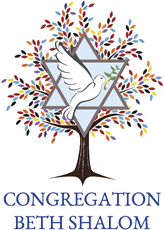This coming Friday, March 24th, Congregation Beth Shalom will commemorate the 106th anniversary of the Triangle Shirtwaist Fire which killed 146 mostly Jewish and Italian garment workers in 1911. The scope of the tragedy focused the nation’s attention on the dangerous working conditions that sweatshop employees had to endure while receiving subpar wages.
While the Triangle Fire led to some improvements in working conditions, and strengthened the role of the International Ladies Garment Workers Union as a bargaining voice for workers, it is easy to forget that the Triangle Fire was not an isolated incident. The same Triangle Shirtwaist Company was involved in a major strike in 1909, two years before the fire. Called the Uprising of the 20,000 (although there were closer to 40,000 strikers), garment workers strove for improvements in working conditions which would have saved many of those who died just two years later.
The Uprising of the 20,000 was a labor strike primarily involving Jewish women working in the shirtwaist factories. In November of 1909, at a union meeting aimed at improving working conditions, Clara Lemlich had been listening to men speak about the disadvantages and cautions of shirtwaist workers going on a general strike. After listening for more than 4 hours, Lemlich asked for permission to express her own feelings. She rose to the podium and declared in Yiddish that the shirtwaist workers would go on strike the very next day. Within one day of the strike being declared, 15,000 workers were on strike, and within a few more days, the number had reached 40,000.
The strike lasted until February of 1910, and was ended by an agreement, The Protocol of Peace which improved working conditions.
Ironically, the Triangle Shirtwaist Company did not accept the Protocols of Peace, and just one year later, 146 Triangle employees lay dead in the ruins of the factory.
B’Shalom
Rabbi Stanley Halpern
